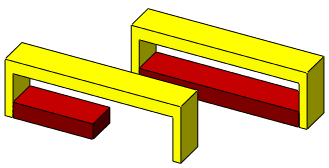Performance Evaluation reports if a subassembly contains a single-configuration component that is driven by an in-context relationship to a multiple-configuration component. The result can be conflicts when rebuilding the assembly.
The in-context relationships can arise from equations or external references.

To list the components with conflicts:
Click Show These Parts  in Performance Evaluation.
in Performance Evaluation.
In the dialog box, you can:
- Select a component and click Fix It. To resolve the conflict, the software adds a derived configuration to the selected component.
- Print the list, copy it to the clipboard, or save it to a file.